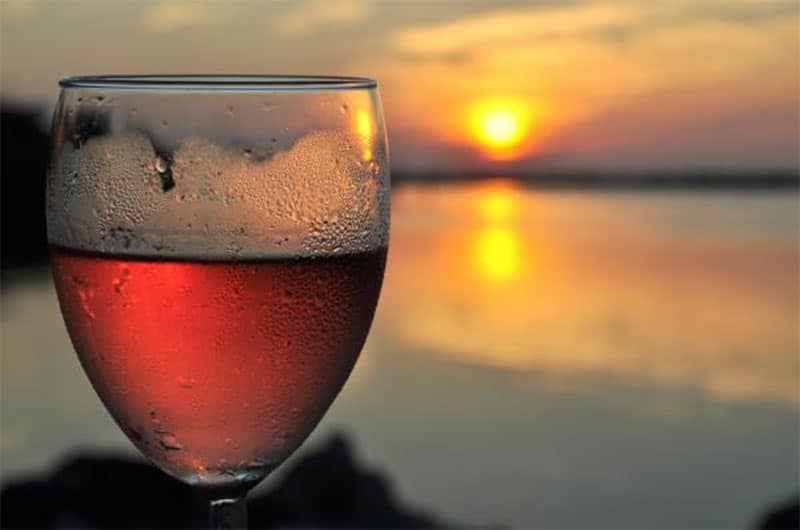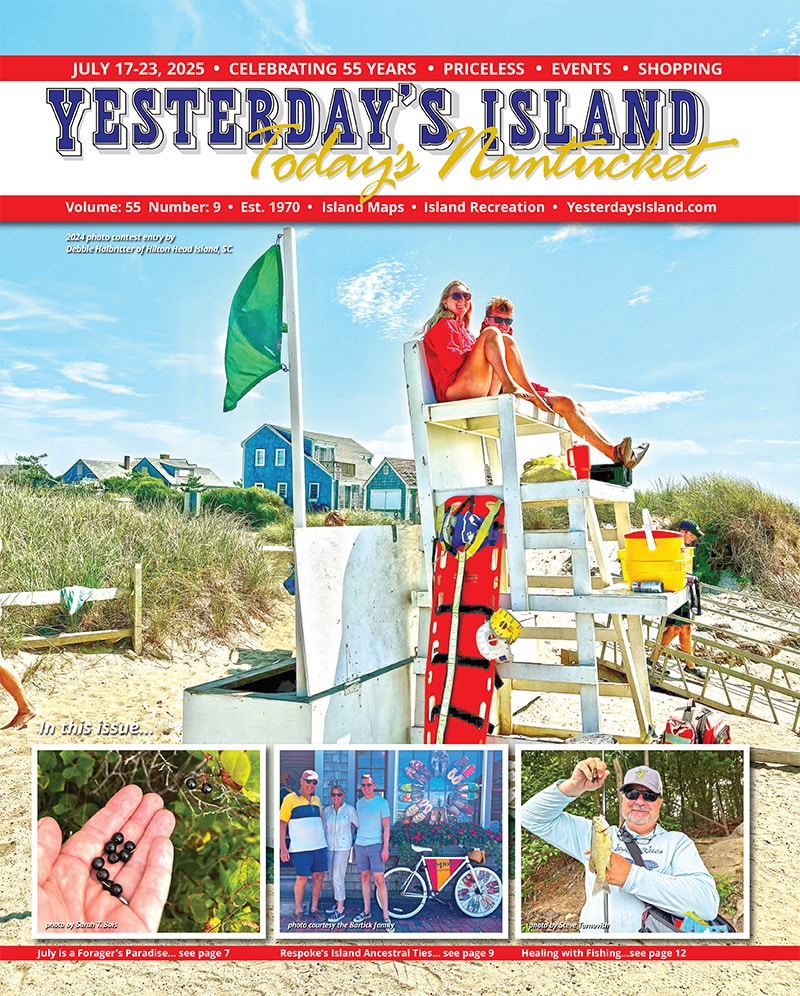by Jenny Benzie, Advanced Sommelier + Certified Wine Educator, Proprietress of Épernay Wine & Spirits
Rosé isn’t just about warm and sultry summer days on sunny beaches anymore. Also sometimes referred to as “Nantucket Water,” this refreshing category of wine, as an alternative to red or white, has become part of the glamorous lifestyle associated with life on our magical island. As the sun begins to set a little earlier and the night air becomes crisp and worthy of your favorite cozy zip sweatshirt, now is the time to start the transition to fall weather drinking rosés that offer a little more substance than your light and easy-drinking summer sipper.

This affordable rosé that conveniently comes with an easy access screw-top is a blend of Cinsault, Grenache Syrah. The grapes are bled into stainless steel tanks in order to extract minimal color. From the inviting bright peach pink color, to the fresh and aromatic nose of red fruit and wild flowers, this wine has an excellent balance of texture, moderate acidity and great length that will linger on your palate for several minutes after your first sip. Best paired with Sunset at Steps Beach.
Gerard Boulay, Sancerre Rosé 2016: Of the small number of vineyards owned by Gerard Boulay in the hamlet of Sancerre known as Chavignol, these vineyards are on Kimmeridgian soil (the same chalky, mineral soil found in Chablis). Boulay personally works his organically-farmed vineyards by hand, letting nature make the wine for him. Unlike many Sancerre Rosés, Boulay’s 100% Pinot Noir Rosé is not made from a selection of young vines but rather from 35-40 year old Pinot Noir vines located on the steep hillsides right in front of the his home on the property. The wine is tank fermented and aged, meaning no oak about it at all.
The deep salmon color shows that this is a more meaningful wine meant for food and an adult evening of conversation, but don’t take the wine too seriously either. Mineral driven on the nose, it has soft peach and strawberry flavors combined with the continuation of the minerality with a lengthy finish that invites you to slowly come back for more. Serve poolside with your backyard barbeque.
Château Pradeaux, Bandol Rosé 2016: There is Bandol, known more for its red wine production, and then there is the iconic, standard bearing, leading rosé of the region from the Portalis family of Château Pradeaux. The property is located on the outskirts of the town of Saint Cyr-sur-Mer, directly on the Mediterranean Ocean between Toulon and Marseilles. The estate has been in the family since the 18th century. While the soil of the vineyard is worked by machine, there are no pesticides or herbicides used and it is managed according to the vegetative and lunar cycles prescribed by the biodynamic calendar. They use organic compost and manually harvest the grapes when it does come time for picking.
Although the major part of the vineyards is planted to Mourvèdre, the Château Pradeaux Bandol Rosé is composed of Cinsault as well as Mourvèdre. After a short maceration on the skins, in order to extract a light color, the juice is fermented at low temperatures to retain freshness, fruit and bouquet and aged in cement tanks. It is one of the richest of the rosés of France, and perhaps the most serious wine in this category. The younger vines of the domaine at about 25 years old are utilized to produce this rare rosé with staying power and exceptional complexity. Think of pairing this with salmon, cassoulet and (once autumn arrives) leg of lamb.
Château Saint-Maur ‘L’Excellence,’ Côtes de Provence CRU CLASSE Rosé 2015: Located just 10 km from Saint-Tropez in the picturesque Provençal village of Cogolin, this estate is one of only fourteen properties that can officially designate themselves Crus Classés based on an evaluation of the estates’ history, winemaking and cellar reputation and overall vineyard quality since 1955. It is at the foothills of the impressive Maures mountain mass, where it is sheltered from the winds but enjoys a mild maritime influence that tempers strong summer temperatures.
This top wine from the estate, hence named “L’Excellence,” is ripe and powerful. Made from a traditional Côtes de Provence grape blend of Grenache, Syrah and Cinsault, this attractive silver-pink colored wine is beautifully ripe and fruity on the nose. Peach and pear fruit flavors, along with a citrus burst at the end, add an attractive lift. The flavors of red fruits, peach and apricot bring enjoyment and aromatic complexity to this balanced and structured rosé offering. The ultimate wine for an excellent adventure.
Keep in mind that not all Rosé is created equal. This means that based on the climate and soil where it is grown, the mélange of grape varieties used for blending, along with production methods in the winery, all have an influence on the final outcome of this delicious category of wines. Be adventurous as summer comes to an end as now is the time to drink that bottle of rosé that you forgot about from last year. Like finding a genie in a bottle, you will be amazed at how delicious it can be with that extra year of ageing in the bottle. Cheers!



